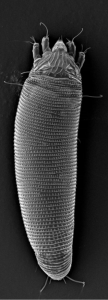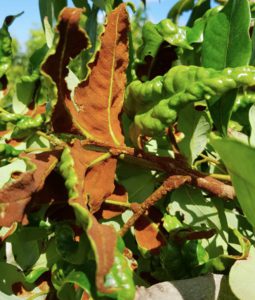Are there leaf galls on your lychee tree? A pest new to Florida could be responsible. The lychee mite (Aceria litchii) causes galls on leaves of lychee and longan trees. The mite is microscopic, but it can cause serious injury to flowers and fruit if enough mites infest the tree. The lychee mite is a quarantine pest in the continental United States.

Lychee mite galls

As lychee mites feed, they make plant cells change shape and grow. These alterations create leaf galls. On the upper surface of the leaf, the galls look like small bumps. These bumps get bigger over time. On the underside of the leaf, the gall is hairy. Lychee mite galls have more hair than galls caused by other pests. At early stages, the hairs are white in color. Under heavy infestations, the entire underside of the leaf can turn velvety brown and the leaf may curl.
Detection
This mite has been detected in Bokeelia, Pine Island and Cape Coral. Due to the risk to lychee production, the lychee mite is regulated in Florida. Surveys are being conducted in collaboration between the Florida Department of Agriculture and Consumer Services (FDACS) and the University of Florida to locate possible infestations.

If you think that you may have located lychee mites, check out the FDACS pest alert for the lychee erinose mite. You can also email the DPI helpline at DPIHelpline@FreshFromFlorida.com. More information is available from the University of Florida post, “New serious pest of lychee trees found in Florida“.
 1
1
